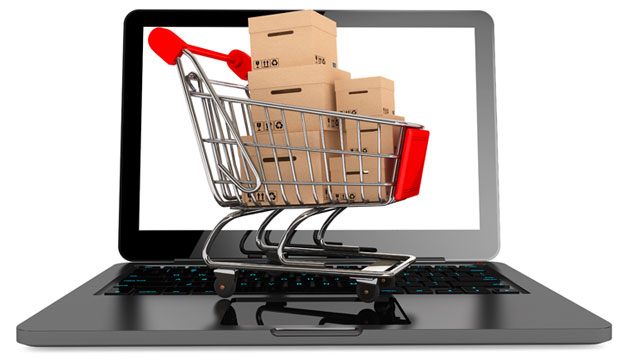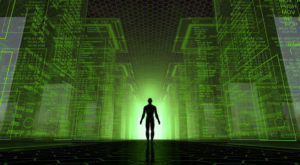There is little doubt that the Internet — especially Amazon — has altered the way U.S. consumers think about shopping.
E-commerce sales grew 15.6 percent in 2016 and now account for 11.7 percent of all retail sales, according to recent reports. Amazon accounts for a whopping 43 percent of those e-commerce sales.
Amazon, in particular, has changed the way consumers think about e-commerce sales, or etail. If you live in a major city like Phoenix, which has a major distribution center, it is not uncommon to order items sold by Amazon and have them delivered the same afternoon.
In addition, Amazon has introduced a number of other shopping concepts of late and is moving directly into operating brick-and-mortar stores. Will Amazon’s moves bring back the traditional retail shopping experience, or is it gone forever?
Amazon’s Innovations
As a company, one of Amazon’s goals is to expand its presence and that of technology in retail.
Amazon Locker offers convenient locations for people to pick up amazon packages. Amazon Books offers consumers the traditional book store experience with those old-fashioned paper products. Amazon Go allows people to shop for groceries without having to exit through checkout lines. AmazonFresh Pickup combines the etail experience with the convenience of picking up purchases on your way home from work.
With the acquisition of Whole Foods, Amazon has cemented its position as both a grocer and a brick-and-mortar retailer. The deal has provoked a great deal of speculation about how Amazon will change Whole Foods and the brick-and-mortar experience.
The acquisition also has given rise to speculation about what retail companies Amazon might acquire next — an apparel chain, discount chain or something else.
Virtual Shopping Adjustments
Although Amazon and the Internet have changed the shopping experience — and in many ways, improved it — there are still side effects associated with this shift to etail commerce. For one, etail is a less social environment. Shopping malls typically include restaurants, entertainment, and other activities.
The social effects of e-commerce dominating society — if or when that may come to bear — are unclear. That’s not to mention all the lost retail jobs as things shift to e-commerce warehouses that increasingly use robotic automation.
However, the hardest change to deal with may be the loss of the experience — the touching and feeling of products before you buy them. As I can attest, not every men’s medium dress shirt is cut the same, not every shoe fits a wide foot, and not every color looks good on a pale Scottish complexion.
Some would argue that AI and high-end computer graphics eventually will solve these fit and style issues, and I agree — but it still does not tell me if I will like the fabric or the fit.
Amazon’s recently announced Prime Wardrobe will offer the “try it before you buy it” experience, but even though this might work with clothing, it will not work for other products, like vehicles.
Glitches Abound
Last year, I wanted to buy a little buggy for the family to enjoy. A decade ago, there were at least a dozen small shops selling these in the metro area, but there is no longer a single one left — unless I wanted to fork over the price of a car for a Polaris Razor or similar high-end UTV.
The closest retailer I could find selling the products I desired was in another state, California. This is also the case with bicycles and many other products — that is, the local selection has become very limited. With etailers like Amazon and Walmart, you can order you anything you want, but you don’t have the same opportunity to look before you buy.
The e-commerce experience also faces challenges. Walmart falls short on shipping. I tried ordering two kayaks through Walmart because the local store was being remodeled and did not have the kayaks in stock. I was able to order the ones I desired online, but they were shipped through a company that refused to deliver to my area, an issue I have never had with UPS or FedEx.
Of course, the shipping company didn’t even tell me it would not deliver the kayaks until after it had delayed my order by three weeks. Sadly, this is not the first time I’ve faced challenges with Walmart’s second-rate shippers.
Amazon, on the other hand, has an issue with its Subscribe & Save program, which allows you to sign-up for prescheduled shipments of products you use on a regular basis. On several occasions, it has promised products and then informed me at the last minute that they were “out of stock.”
I have had several products on Subscribe & Save that were promised but not delivered for up to six months before Amazon finally deleted the products from the program. Ironically, you can order and receive the products through other Amazon services — like Amazon Pantry — but not with the Subscribe & Save discount.
Some Experiences Gone Forever
Despite challenges, Amazon continues to innovate around the etail and retail experience, and in creating new business models for commerce. While I admire Amazon’s efforts to develop a complete range of shopping options for consumers anchored in the use of the latest technology, along with its efforts to resurrect brick-and-mortar stores, I feel that much of the traditional shopping experience is gone forever, and so too are many other experiences — and jobs — associated with it.
Unfortunately, the trend toward etail is likely to impact all forms of retail, leaving only service-oriented businesses in many communities. The businesses that have been the least affected thus far are those that sell products consumers expect to pick out and take home immediately, like groceries and building supplies, or those that customers want to inspect closely, like cars.
Amazon already is targeting grocery stores aggressively, while Tesla is targeting the traditional automotive sales model. It’s only a matter of time before Amazon — or some other company that already targets hardware and furnishings — will find a way to etail building supplies better than the existing big box stores.
Welcome to the new shopping era, and its sometimes disappointing experience.























































This is good article,
I like the most "Try it before you buy it" concept. It might be possible that it cannot work for all types of products, but it will gain attention of more consumers towards products presented with this concept.